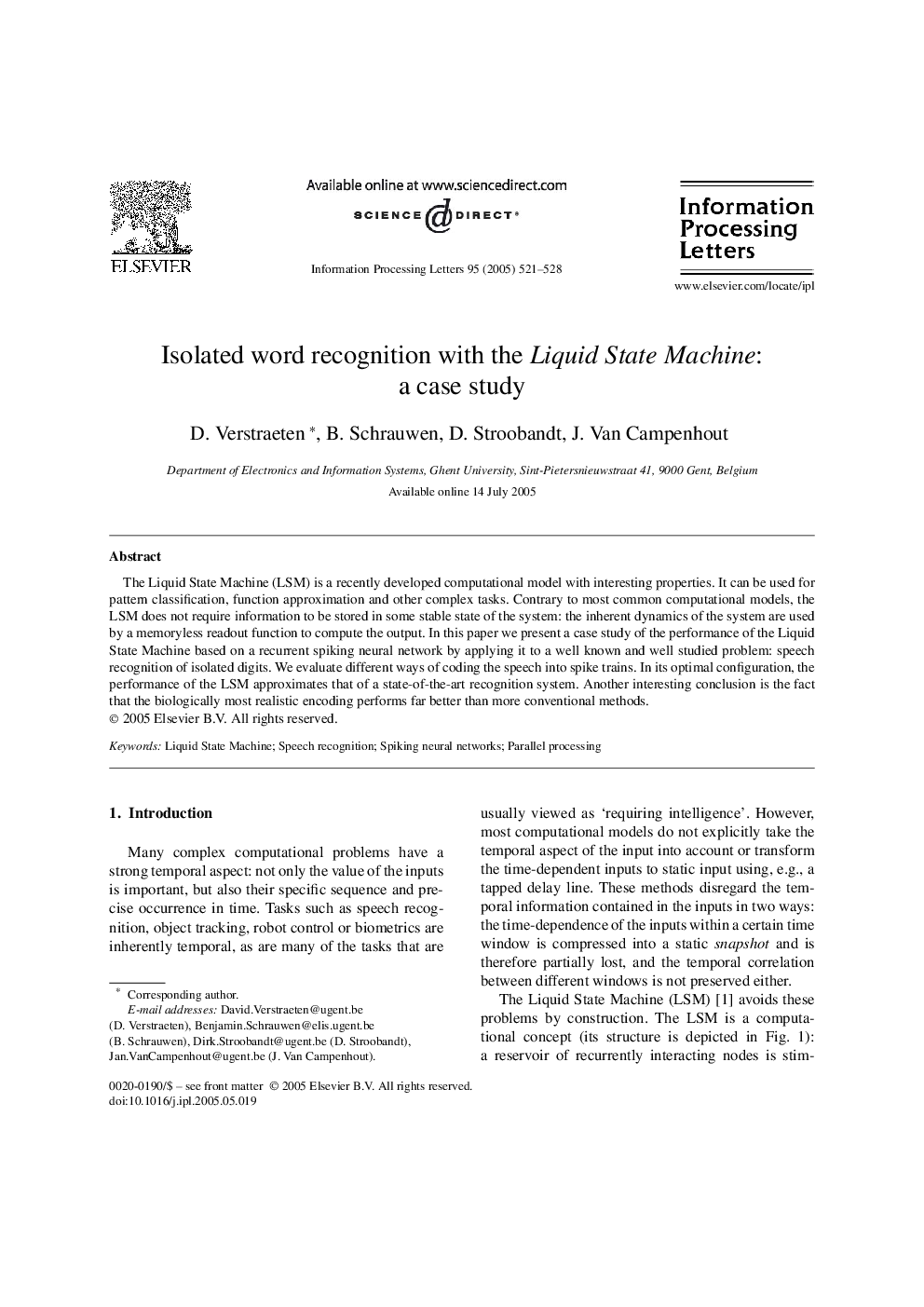| Article ID | Journal | Published Year | Pages | File Type |
|---|---|---|---|---|
| 10332135 | Information Processing Letters | 2005 | 8 Pages |
Abstract
The Liquid State Machine (LSM) is a recently developed computational model with interesting properties. It can be used for pattern classification, function approximation and other complex tasks. Contrary to most common computational models, the LSM does not require information to be stored in some stable state of the system: the inherent dynamics of the system are used by a memoryless readout function to compute the output. In this paper we present a case study of the performance of the Liquid State Machine based on a recurrent spiking neural network by applying it to a well known and well studied problem: speech recognition of isolated digits. We evaluate different ways of coding the speech into spike trains. In its optimal configuration, the performance of the LSM approximates that of a state-of-the-art recognition system. Another interesting conclusion is the fact that the biologically most realistic encoding performs far better than more conventional methods.
Related Topics
Physical Sciences and Engineering
Computer Science
Computational Theory and Mathematics
Authors
D. Verstraeten, B. Schrauwen, D. Stroobandt, J. Van Campenhout,
